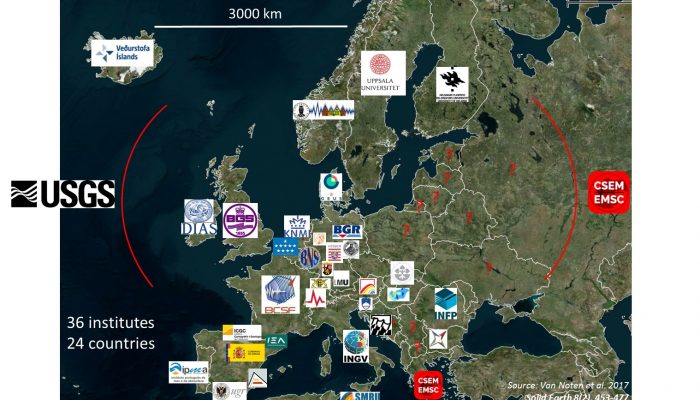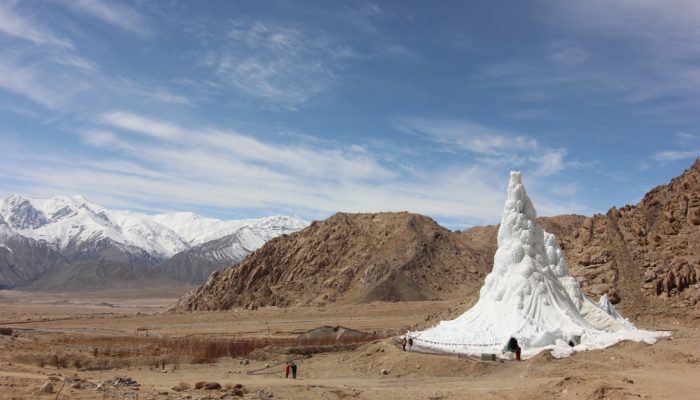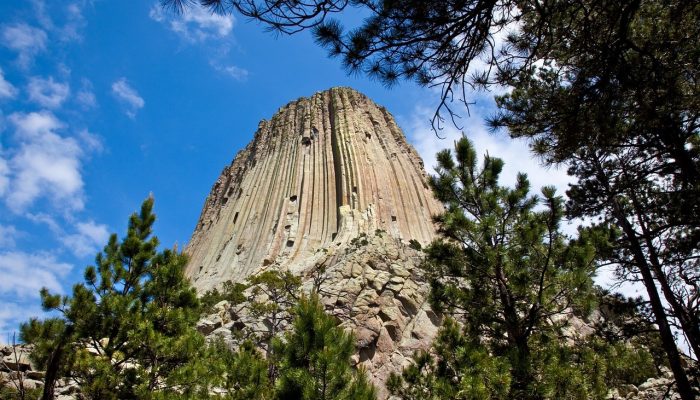“Did you feel the earthquake ?” “Avez-vous ressenti un tremblement de Terre?” “Erdbeben gespürt?” ” Følte du siste jordskjelv?” “Sentiu um Sismo?” “Ha sentido algún terremoto?” “Pocítili ste zemetrasenie?” “Hai Sentito il Terremoto?” “почувствахте ли земетрес ...[Read More]
GeoLog
GeoPolicy: COP23 – key updates and outcomes
What is COP23? Anthropogenic climate change is threatening life on this planet as we know it. It’s a global issue… and not one that is easily solved. The Conference of the Parties (COP) provides world leaders, policy workers, scientists and industry leaders with the space to share ideas and decide on how to tackle climate change and generate global transformative change. COP23 will predominantly f ...[Read More]
Cryospheric Sciences
Image of the Week – Ice Stupas: a solution for Himalayan water shortage?
As the world searches for practical innovations that can mitigate the impact of climate change, traditional methods of environmental management can offer inspiration. In Hindu Kush and Karakoram region, local people have been growing, or grafting, glaciers for at least 100 years. Legend has it that artificial glaciers were grown in mountain passes as early as the twelfth century to block the advan ...[Read More]
WaterUnderground
Bedrock: A hydrogeologist’s devotional
Post by Kevin Befus, Assistant Professor at the College of Engineering and Applied Science at the University of Wyoming, in the United States. _______________________________________________ I want to share a book with you that has encouraged me through initial academic mires (I was only in graduate school for 7 years…) and inspired me to expand my perception and appreciation of the natural world. ...[Read More]
Geology for Global Development
Jesse Zondervan’s #GfGDPicks (Nov 2017): How did people in ancient times fare during climate changes? Should we use geoengineering? #SciComm
Each month, Jesse Zondervan picks his favourite posts from geoscience and development blogs/news, relevant to the work and interests of Geology for Global Development . Here’s a round-up of Jesse’s selections for the past month: How successful were people in the Neolithic and ancient times in adapting to climate change? Two contrasting stories emerged this month: A new study from Past Global Chan ...[Read More]
Geology for Global Development
Robert Emberson: Geomythology – Why understanding cultural traditions of landscape are important for sustainable development
Every culture has myths and legends about their native lands. Before we understood the geological forces that forced up great ranges of mountains or sculpted barren deserts, humans needed an explanation for the scale and majesty of natural phenomena. Stories of deities inhabiting volcanoes, or angry gods shaking the very ground upon which people lived, helped people make sense of disasters when te ...[Read More]
GeoLog
What’s new for the 2018 General Assembly?
Along with our conference organisers, Copernicus, we aim to improve the experience of General Assembly attendees year on year. Following feedback from participants in 2017, we’ll introduce some changes we hope will make the 2018 edition of our meeting even better! This post highlights a few of the changes that returning participants will notice at next year’s conference. An ever-growing numb ...[Read More]
Solar-Terrestrial Sciences
EGU for Early Career Scientists
Are you a student, or have obtained a MSc or PhD degree within the past 7 years? If yes, you are an Early Career Scientist! In the EGU we take great care of the young scientists, and offer a wide range of opportunities, mostly associated with the General Assembly. My name is Jone Peter Reistad and I am the Early Career Scientist (ECS) representative in the Solar-Terrestrial division. My role is to ...[Read More]
Geodynamics
The quest of a numerical modelling hero
Numerical modelling is not always a walk in the park. In fact, it resembles a heroic quest more often than not. In this month’s Wit & Wisdom post, Cedric Thieulot, assistant professor at the Mantle dynamics & theoretical geophysics group at Utrecht University in The Netherlands, tells the story of his heroic quest to save the princess from the dragon clear a code from bugs and shows ...[Read More]
Geodesy
So we produced this big pile of GIS data, what now?
We all know that easy access to data speeds up doing research. In this post, we will discuss how open GIS data can stimulate innovative ways of doing research in the field of geodesy and geosciences, considering first the benefits and challenges of open data. Geodesy can benefit greatly from the open data movement and from open Geographic Information System (GIS) data. The reasons for this are two ...[Read More]










